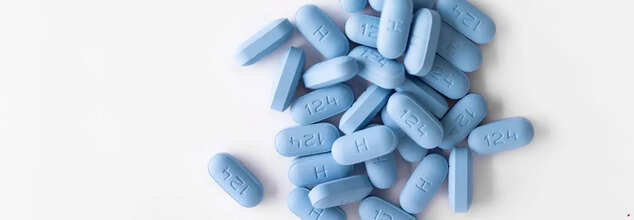
Credit: Canva
Hepatitis On Rise In India: What Is Causing It?
Hepatitis, a disease that causes inflammation of the liver, is more prevalent than HIV in India and has a mortality rate exceeding nine times that of TB. The inflammation of the liver can be caused by a number of things, including viruses, chemicals, drugs, alcohol, genetic disorders, or an overactive immune system. It usually presents with symptoms like fever, jaundice and abdominal pain, vomiting and nausea, loss of appetite and acute liver failure.
Rising Hepatitis Cases In Children
As per Liver Specialists, the recent rise in hepatitis cases among children could be attributed to several factors, including inadequate sanitation and hygiene practices, contamination of food and water supplies, low level vaccination coverage and increased exposure to hepatitis virus. Moreover, the cases rise of Hepatitis A and E, significantly rise in monsoon, sewages overflow and contaminate water sources.
According to Dr BS Ahuja, M.B.B.S, M.D (medicine) at Kharay Hospital, Ludhiana, said "Street food is the largest cause of liver infection through contaminated food and water in India", he said. Adding further, Dr Ahuja opined, "While most liver infections are self-limiting, meaning they resolve on their own, about 2% can become life-threatening, especially if left undetected".
Is Diet Important In Preventing Hepatitis?
Diet plays a crucial role in both the prevention and management of liver infections, particularly Hepatitis. Even in extreme cases of infection, proper hydration is the key, besides eating nutrient-rich food. Avoiding certain foods, especially those prepared under unhygienic conditions, plays a crucial role when it comes to prevention.
Street foods like panipuri and chaat are particularly risky. Food items involving unboiled water, raw salads and juices also put you at risk. Dr Thiagarajan Srinivasan, Liver Transplant Specialist at MGM Healthcare, emphasises that even food cooked at home should be handled with care. "Avoid eating food that was cooked more than 12 hours ago. Additionally, food should only be reheated once, and fried foods should not be reheated at all."
He also talked about the concerning trend which involves the use of used cooking oil by smaller eateries as a cost-cutting measure. These oils, often sourced from high-end restaurants, pose serious health risks and should be avoided at all costs.

Is Climate Change Draining The World's Blood Banks?
In the aftermath of a global pandemic, with the memory of oxygen shortages still fresh and the threat of new infectious diseases looming large, the world's healthcare systems are stretched thinner than ever. We're battling overlapping health crises- resurging malaria and dengue cases, the global spread of West Nile virus, new strains of flu, antibiotic-resistant infections, and a growing mental health epidemic. Public health is in constant firefighting mode but there is one quiet casualty of this mad world that seldom hits the headlines—our blood supply.
Blood—so simple, so essential—lies at the very center of modern medicine. Whether it's stabilizing a trauma victim, sustaining a cancer patient through chemotherapy, or enabling women to survive complicated delivery, the presence of safe, screened, and timely blood transfusions is not negotiable. And yet, today, that lifeline is being quietly and methodically disrupted.
As global warming picks up, it is progressively eating away at all levels of the blood supply chain—donor health to storage conditions to transportation logistics. Intense heatwaves deter donors, electricity failures weaken storage refrigeration, and flooding or forest fires slow blood unit delivery. Insects that transmit blood-borne illnesses such as dengue and West Nile virus are spreading to new areas as a result of altered weather patterns, complicating and accelerating blood screening. In short, what was once a relatively predictable system is now under attack from unpredictable climatic events.
This isn't a remote threat—it's occurring today. A recent study in The Lancet Planetary Health cautions that climate change may compromise the safety, adequacy, and availability of blood supplies around the world. Investigators have demanded proactive measures: additional mobile and versatile blood collection units, enhanced disease monitoring, and global cooperation to maintain resilience against environmental shocks.
Behind all the science and statistics stands a human narrative: a father in need of blood following a car accident, a child with sickle cell disease, a pregnant woman. Their lives are not only dependent upon donors, but upon a system powerful enough to withstand the floods—literally.
As the planet's climate crisis gains speed, its effect is no longer limited to melting glaciers or sea level rise—it now runs in our veins, literally. The integrity of the global blood supply is becoming a vital, under-covered casualty of global warming. With millions depending on secure blood transfusions for surgeries, trauma, cancer treatment, and the control of chronic disease, interruptions to the blood supply chain can be disastrous for public health systems globally.
From shifting donor supply to jeopardizing storage and transportation logistics, climate change is quietly mounting pressure on every step along the blood supply chain and with the planet warming up, so does the imperative for health systems to do the same.
Blood is the foundation of emergency care and chronic patient management. Over 25 million units of blood are transfused every year in Europe alone, treating victims of accidents, premature babies, and patients with diseases such as sickle cell disease and cancer but providing a steady, clean supply of blood involves a precarious balance of infrastructure, logistics, and volunteer donors.
This equilibrium is increasingly disrupted by climate-related disturbances—severe heat, floods, storms, and disease outbreaks—that affect everything from donor engagement to safe blood transportation and storage.
How Climate Events Disrupt the Blood Supply?
Severe weather events like hurricanes, floods, wildfires, and heatwaves are becoming more frequent and intense, directly impairing the capacity to obtain, test, store, and distribute blood products. Such events can physically destroy facilities, restrict staff and donor mobility, or lead to spontaneous spikes in demand because of injury.
Natural disasters not only disrupt transportation and storage but also reduce the pool of available donors, said Red Cross Lifeblood and University of the Sunshine Coast (UniSC) Australian Australia's Dr. Elvina Viennet. "These events upset the storage, safety, and transport of blood, which has a limited lifespan," she said.
The effect is not hypothetical; when hurricane Harvey struck in the US, for example, hundreds of blood drives were canceled, creating regional shortages. In these emergencies, there is frequently a simultaneous and urgent rise in demand for blood and fall in supply—a health system's worst nightmare.
Increased rainfall and global warming have pushed the geographical limits of vector-borne illnesses such as dengue, malaria, and West Nile virus—some of which are transmissible through blood. Ideal breeding conditions for mosquitoes are promoted by warmer climates, which makes transfusion-transmissible infections (TTIs) a matter of concern.
"Climate change could affect some blood-borne infectious diseases that can exclude individuals from donating," Viennet said. This complicates and costs more to screen blood, overloading already stressed health systems.
Europe has already seen an increase in dengue cases previously unusual in the region illustrating the speed at which new threats are arising because of changes in the environment.
Donor Health and Availability in a Changing Climate
Aside from infectious diseases, climate change can also have a direct impact on donor health. Heat, air pollution, dehydration, and cardiovascular stress can decrease the number of eligible donors. Even minor physiological changes—such as changes in haemoglobin levels due to heat—can disqualify donors.
There is also a mental health angle to consider where climate anxiety, post-disaster trauma, and stress from displacement can reduce donor participation. The study pointed to increased anxiety and depression among both donors and healthcare workers in the aftermath of extreme weather events.
As climate change worsens chronic conditions—specifically cardiovascular and respiratory disease—it also raises demand for blood transfusions. Complications of pregnancy, sickle cell crises, and surgeries can become more common, adding demand-side pressure to blood banks.
This combined risk of dwindling supply and escalating demand is not abstract; it's already materializing. Left unchecked, health systems could soon experience catastrophic care gaps.
Ways to Protect Blood Supplies in a Warming World
To combat this impending crisis, scientists and policymakers recommend a multi-faceted strategy:
- Mobile and flexible blood donation facilities that can function during and after severe weather conditions.
- Global cooperation to exchange blood supplies across borders during scarcity.
- Research investment to learn how climate factors affect donor health and blood stability.
- Implementation of cell salvage methods (autotransfusion) in operating rooms to minimize dependence on external blood supply.
Increased diversity donor recruitment, particularly from migrant communities, to more closely match rare blood groups and meet altered demographics.
As UniSC's Dr. Helen Faddy pointed out, "With sea levels rising and migration rates growing, it's critical to have a greater number of blood donors from diverse ethnicities."
The blood supply is not only a technical problem—it's a human one. While climate change continues to test the world's health systems, protecting our blood supply has to be an absolute priority. The danger is multiple- biological, logistical, psychological, and infrastructural like the climate crisis itself, it requires global action, scientific innovation, and urgent, sustained effort.

Credit: Canva
Eli Lilly's Experimental GLP-1 Pill Shows Promising Weight Loss
Drugmaker Eli Lilly announced on Thursday that its experimental oral GLP-1 drug helped people with type 2 diabetes lose an average of nearly 8% of their body weight after 40 weeks, while also lowering their A1C levels.
Lilly, known for injectable drugs like Zepbound for obesity and Mounjaro and Trulicity for diabetes, is among several pharmaceutical companies racing to develop a pill form of GLP-1 medications. So far, the only available GLP-1 pill comes with strict dietary requirements.
This news follows Pfizer’s announcement earlier in the week that it is ending development of its own daily obesity pill due to a possible case of liver injury in a trial participant—an issue that resolved after the drug was discontinued.
While Novo Nordisk’s Rybelsus was approved by the US FDA in 2020 to treat type 2 diabetes, it must be taken on an empty stomach. Some doctors also note that it may not be as effective as injectable versions and still causes side effects.
Unlike Rybelsus, Lilly says its oral medication, orforglipron, requires no dietary restrictions. It’s also the first drug of its kind to complete a Phase 3 trial.
In a study involving over 550 people with type 2 diabetes who had inadequate glycemic control through diet and exercise alone, orforglipron—at its highest dose—reduced body weight by an average of 16 pounds (7.9%). The participants continued to lose weight through the end of the 40-week trial.
The study also met its primary goal: lowering A1C levels more effectively than a placebo. Participants saw average reductions of 1.3% to 1.6% from a baseline of 8%.
GLP-1 drugs work by stimulating the pancreas to release insulin and suppressing the release of another hormone, thereby helping regulate blood sugar. They also reduce hunger and help people feel full longer.
Lilly reported that over 65% of participants taking orforglipron reached or maintained an A1C level at or below 6.5%—the threshold for a diabetes diagnosis.
Dr. Dan Skovronsky, Lilly’s chief scientific officer, said that even before seeing the data, the mood in the room gave away the positive results. “When I walked into the room to see the results, I saw everybody smiling, so I knew they were about to share good news with me,” he said.
According to Skovronsky, liver injuries like the one reported in Pfizer’s trial can be a concern with small-molecule drugs, though they are hard to predict without large-scale testing. “We did not see a liver safety signal with ours, which was a relief,” he said.
The side effects of the pill were similar to those of injectable GLP-1s, with upset stomach being the most commonly reported. Most adverse events were mild to moderate. Notably, more than 90% of participants remained on the medication through the duration of the trial—a strong contrast to injectable GLP-1 users, many of whom stop due to side effects.
While injectable GLP-1 drugs are highly effective, they can be expensive and complicated to produce. They also require refrigeration and generate more packaging waste. A daily pill could simplify treatment, reduce costs, and offer a more convenient option for patients—especially those who are needle-phobic.
“Drugs in tablet form are valuable for a lot of patients for a lot of reasons,” said Dr. Amy Rothberg of the University of Michigan, “particularly those who are needle-phobic. And it probably just simplifies things to just add on another pill, as opposed to taking a shot, which is a little more complex.”
Accessibility is key, especially for medications used over long periods. “As clinicians, our priority is to align treatment with our patients’ preferences to support long-term adherence,” said Dr. Priya Jaisinghani, an endocrinologist at NYU Langone Health. “For patients who may find injectable therapies challenging or undesirable, an oral alternative may improve both initiation and continuation of therapy.”
Rothberg, who was not involved in the trial, added that she hopes Lilly passes on the cost benefits to patients if the drug is approved. “We could reach many more people then,” she said.
The need is urgent: more than 40% of U.S. adults are living with obesity, and 11.6%—or about 38.4 million Americans—have been diagnosed with diabetes, most of whom have type 2 diabetes, according to the CDC.
Skovronsky said that Lilly is already manufacturing orforglipron in anticipation of high demand, assuming future trials also yield positive outcomes.
Lilly plans to publish the trial results in a peer-reviewed journal and will share more findings later this year, including data from another study focused on weight management. The company is also testing the drug’s potential benefits for high blood pressure and sleep apnea—two conditions that GLP-1 injectables have shown promise in treating.
Lilly aims to seek approval for orforglipron as a weight management treatment by the end of the year and plans to submit results related to type 2 diabetes in 2026.

Credits: YouTube and LinkedIn
BeerBiceps Opens Up On Latent Row's Impact On His Mental Health
In this day and age when digital success and stardom is touching the sky, success may feel like a swift, but there are always consequences. For Ranveer Allahbadia - widely known as BeerBiceps- the controversy surrounding the now-deleted show India's Got Latent proved to be more than just a professional set back. For him, it also turned into a mental health crisis. This played out in the harsh glare of public scrutiny.
The Toll Of Early Fame
At 31, Allahbadia built an empire through YouTube, podcasts, motivational speaking, and entrepreneurial ventures. However, early success, especially in a hyper-visible online space, can often mask internal battles.
As per the American Psychological Association, individuals in the public eye - especially younger creators - face higher levels of anxiety, depression, and burnout. The pressure to maintain relevance, avoid missteps, and continually create can push many over the edge.
In January, a clip from India's Got Latent went viral for all the wrong reasons. The segment showed Allahbadia asking a sexually explicit question that involved parents. It was meant as a joke, but widely seen as offensive. The backlash was immediate and brutal. FIRs were being filed across multiple states and social media too turned hostile. His YouTube channel lost over 72,000 subscribers. He was banned from airing new content. And perhaps most crushing of all—he watched his parents and team bear the weight of his actions.
Regaining The Mental Stability
Allahbadia's response to the controversy was uncharacteristically raw. “Lost: Health, money, opportunity, repute, mental health, peace, parents' contentment & much more,” he shared during an Instagram Q&A. He also admitted to breaking down “many days in private,” calling it “the farthest his heart has been pushed.”
This is not just about Allahbadia, but actually highlights a larger, often ignored, issue - how public backlash, especially in digital spaces, can lead to severe mental health consequences. A 2022 Harvard Business Review study found that online creators are at high risk for “digital trauma,” a condition where intense online harassment or criticism leads to anxiety, shame, and even PTSD.
Allahbadia’s story mirrors that of many young influencers who’ve had to reconcile the highs of fame with the lows of virality gone wrong. YouTube stars like Liza Koshy and Emma Chamberlain have spoken about stepping away from content creation due to burnout and anxiety. The fast-paced attention economy leaves little room for pause, making mental health a casualty.
The Ripple Affect
What sets Allahbadia’s case apart is his reflection on collective loss. “People don't understand how many jobs are at stake,” he wrote. “Quickly wrote off my career and hence the careers of 300+ people.” The ripple effect of such controversies isn’t limited to the individual—it stretches to teams, families, and communities built around them.
The mental toll extended beyond personal guilt. Allahbadia admitted that disappointing his parents and hurting his team's future hit hardest. Yet, he credits his recovery journey to their strength, as well as his own mental resilience built through yoga and spiritual practice.
Through the chaos, Allahbadia tried to find growth. His advice? "Start yoga early... A calm mind is earned."
© 2024 Bennett, Coleman & Company Limited

